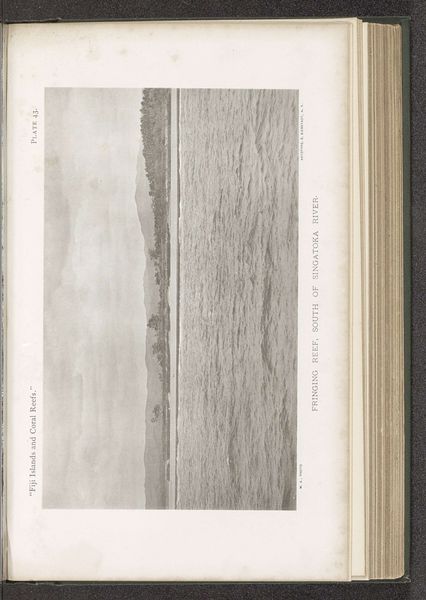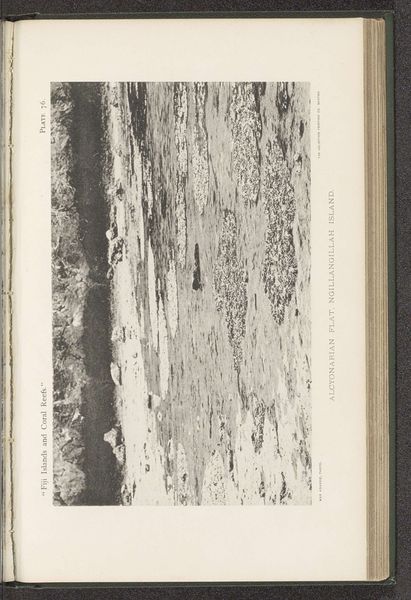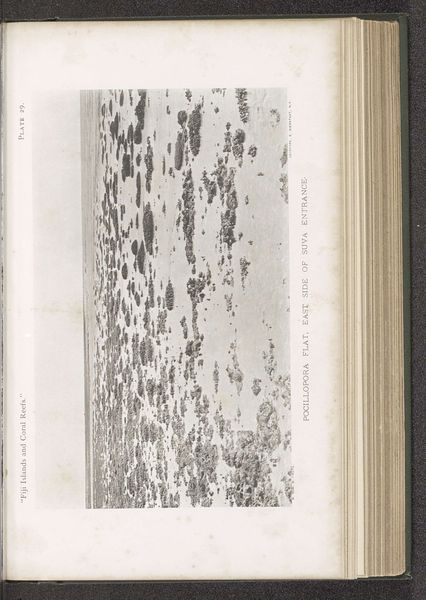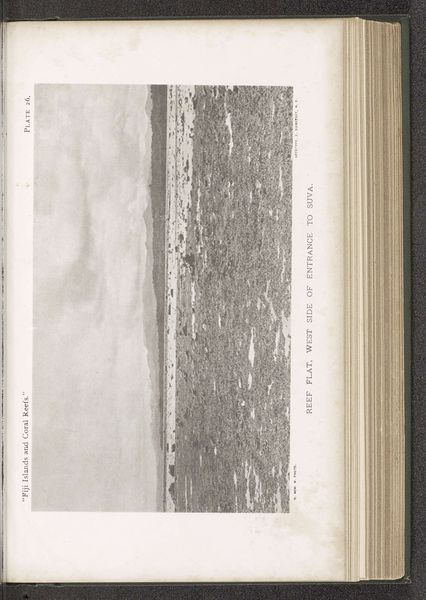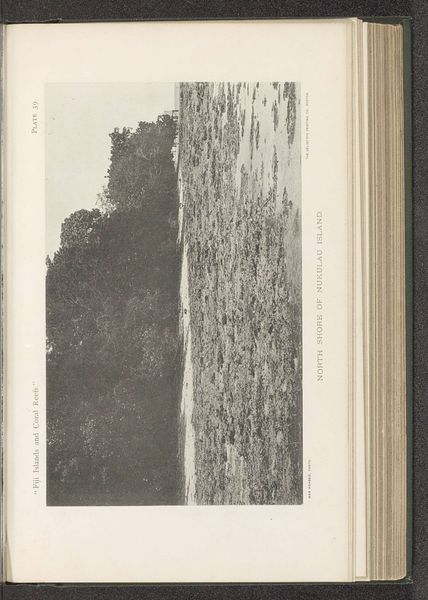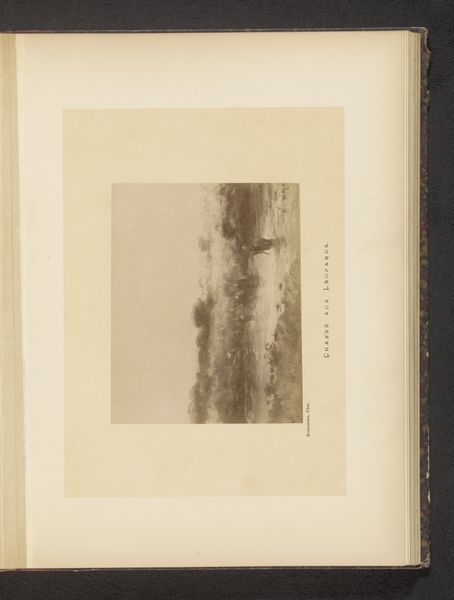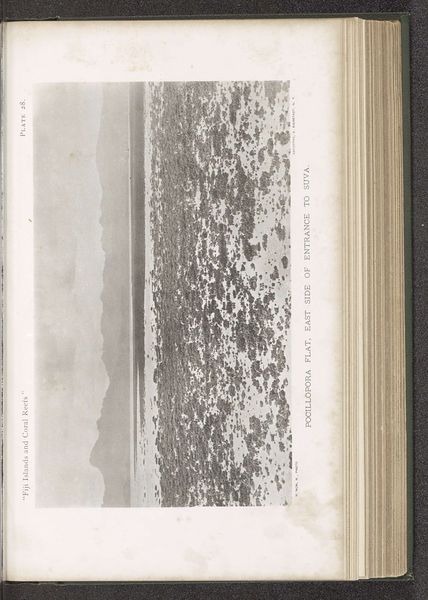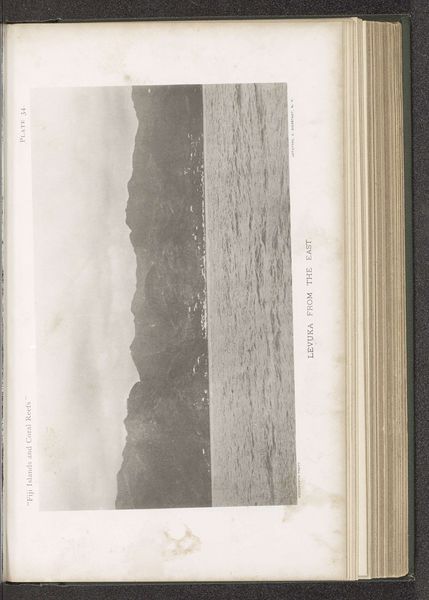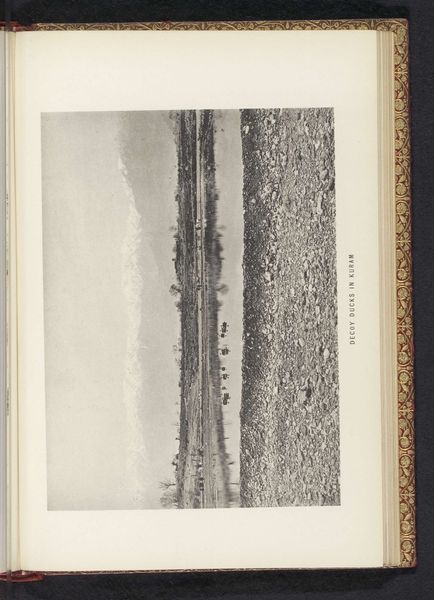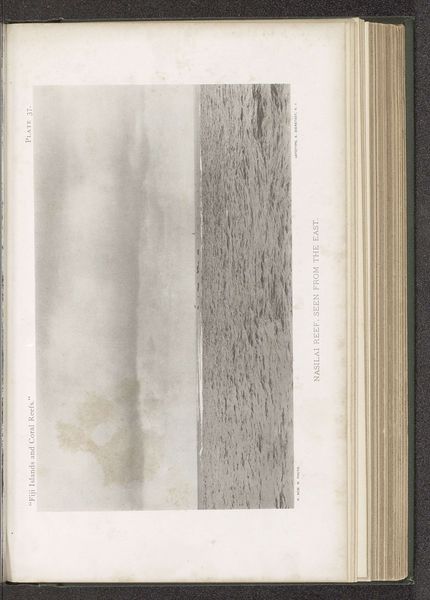
print, photography
# print
#
landscape
#
photography
Dimensions: height 108 mm, width 179 mm
Copyright: Rijks Museum: Open Domain
Curator: This photograph shows "Gezicht op een koraalrif voor de kust van Nukulau" which translates to "View of a Coral Reef off the Coast of Nukulau." It was captured by Maximilian Agassiz sometime before 1899. What’s your initial response? Editor: My first thought is one of sheer density. Look at the grainy texture, the way the light plays across every little imperfection on the reef's surface! There’s a strange beauty in this very material record. Curator: Indeed. Consider what coral represents. Symbolically, coral signifies protection and endurance, which perhaps links to our perceptions of landscape imagery offering cultural or historical grounding to people across time. What do you make of the use of photography here? Editor: I think we can view it in terms of accessibility, both in its production and consumption. Compared to painting, photography in the late 19th century, although not simple, was already providing relatively quicker documentation of natural resources for the use of scientists and other colonial powers. How was this image circulated, who saw it? Curator: Good point. We can see it’s presented in a book. Given that this work emerges during a time of colonial exploration and scientific inquiry, how might the creation of this photograph been driven by both a thirst for knowledge and perhaps, domination? What cultural stories of place were these printed landscapes hoping to displace? Editor: Exactly. And how the print process flattens the whole image is fascinating. This becomes less about artistic interpretation and more about presenting the reef as something standardized, studied, and perhaps exploited. How much value can this flattened object render if it serves only as evidence of colonial enterprise? Curator: That shifts how we view landscape; more a specimen than scenery, as source rather than symbol. The photographer as scientist more than artist, documenting something to extract its inherent value, material value of labor, land, resources, bodies. Editor: Right. Seeing the image displayed like this makes me reflect on labor of those unnamed people who assisted in the process or, worse, displaced from the site itself. What impact has this pursuit of knowledge and profit ultimately created? Curator: It prompts us to critically re-evaluate the legacy of image-making and question assumptions about visual records representing objective realities. Editor: It does indeed. This piece helps to visualize our responsibility to consider whose stories are being told through representation, as well as what and who remains missing.
Comments
No comments
Be the first to comment and join the conversation on the ultimate creative platform.

